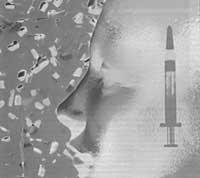Children "crack"
1989/01/01 Elhuyar Zientzia Iturria: Elhuyar aldizkaria
The presence of crack (hard variable of cocaine) during pregnancy produces harmful effects on the fetus, expanding the chances of premature labor and reducing fetal growth. According to data from the Higland General Hospital of Oackland (USA), 20% of those born this year in this center are affected by this crash. This figure is 5 times higher than in 1984 and highlights the increase in the consumption of this drug in some sectors of American society.
Apparently, this drug, known as crack, has a violent effect when it is saved (hence its name) and can cause spasms in the fetus until it interrupts its flow of oxygen and nutrients. Some doctors consider that a single dose of crack produces irreversible effects for the body, but undoubtedly the risk that the fetus will suffer attacks, seizures and malformations (kidney, genitals, bowel and even spinal cord) is greater. In the most serious cases, the placenta can be released, with a risk of death for the mother and fetus.
The newborn affected by this drug has a very special picture: signs of irritability, tremors and lethargy (disappears one week after delivery). As this phenomenon is new, there is no data of the long-term evolution of these children, but they say that the children of the “crack” are born with head smaller than the normal ones, and at 3-6 years their intelligence coefficient is lower.

Gai honi buruzko eduki gehiago
Elhuyarrek garatutako teknologia





